Waymo faces tough ruling by judge: Alphabet’s Waymo is facing a serious challenge in making its court case that Uber is guilty of stealing intellectual property behind its innovative self-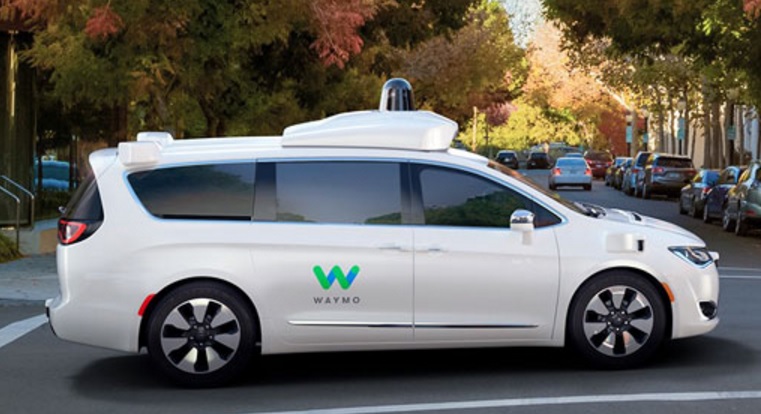 driving car technology. The federal judge in San Francisco hearing the trial has excluded Waymo’s damages expert, Michael Wagner, from the case; and has restricted use of financial evidence at the trial, according to a docket entry. Waymo claims that it has received damages worth about $1.9 billion in losses. Uber has denied using intellectual property that had allegedly been stolen by former Waymo engineer Anthony Levandowski. Waymo responded to the judge’s decision with a statement that it could still pursue full damages using “the same documents” relied upon by Wagner.
driving car technology. The federal judge in San Francisco hearing the trial has excluded Waymo’s damages expert, Michael Wagner, from the case; and has restricted use of financial evidence at the trial, according to a docket entry. Waymo claims that it has received damages worth about $1.9 billion in losses. Uber has denied using intellectual property that had allegedly been stolen by former Waymo engineer Anthony Levandowski. Waymo responded to the judge’s decision with a statement that it could still pursue full damages using “the same documents” relied upon by Wagner.
Making hydrogen even cleaner: Hydrogen fuel station company True Zero says that fuel cell vehicles in California have driven 17 million miles and have used 250,000 kilograms (250 metric tons) of clean hydrogen. That’s come from fuel supplied to 18 retail stations owned and operated by the company. There are now 31 stations open across California, supported by California Energy Commission grant funding. Two-thirds of True Zero’s hydrogen comes from fossil fuels, such as natural gas. One third comes from renewable sources such as biomass; the company says that it is working to increase the use of renewable hydrogen.
Tesla acquires automation company to speed production: Tesla has acquired a company to further automation at its manufacturing facilities, opening the door to increase production of its closely 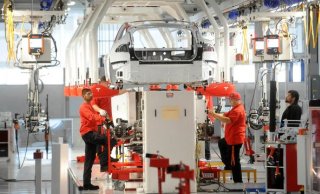 watched Model 3. Perbix, a maker of automated machines used for manufacturing, has been acquired by Tesla after nearly three years of working with the electric carmaker. Tesla has declined to disclose the cost of the acquisition and other details. Tesla will be expanding Perbix’ operations in the Minneapolis area, where the supplier is based. Tesla CEO Elon Musk has recently been making comments about the automation challenges holding up hitting the production timeline that had originally been set for the $35,000 Model 3. In other news, Jon Wagner, Tesla’s director of battery engineering, has left the company and is launching a battery and powertrain startup in California.
watched Model 3. Perbix, a maker of automated machines used for manufacturing, has been acquired by Tesla after nearly three years of working with the electric carmaker. Tesla has declined to disclose the cost of the acquisition and other details. Tesla will be expanding Perbix’ operations in the Minneapolis area, where the supplier is based. Tesla CEO Elon Musk has recently been making comments about the automation challenges holding up hitting the production timeline that had originally been set for the $35,000 Model 3. In other news, Jon Wagner, Tesla’s director of battery engineering, has left the company and is launching a battery and powertrain startup in California.

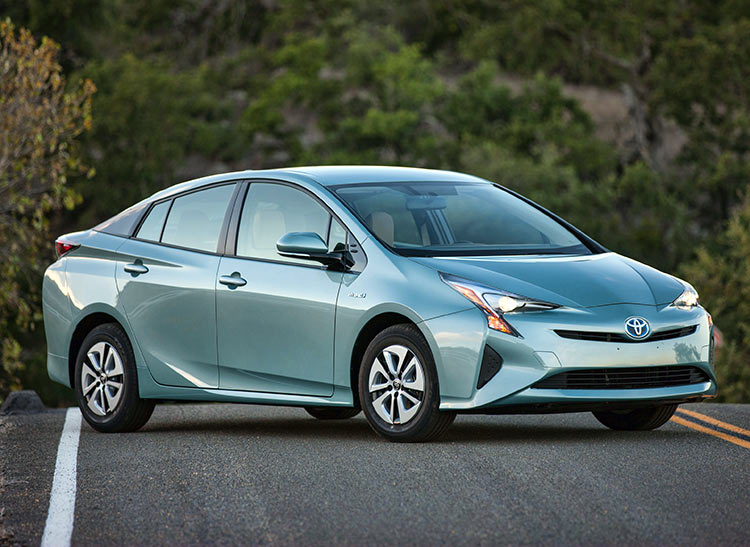 during October but down from September, which was the case with the overall new vehicle sales market. Sales were up for each category (hybrid, plug-in hybrid, and battery electric) year-to-date. Hybrids came in at 2.18% of U.S. new light duty vehicle sales in October, and plug-in electrified vehicles made up 0.996%. The Toyota Prius Liftback continues to fall out of place as the top selling hybrid in the U.S., coming in third place last month behind the Ford Fusion Hybrid and Toyota RAV4 Hybrid. It’s still the leading hybrid model for this year at 55,443 units sold versus 49,764 of the Ford Fusion Hybrid. The Prius Liftback is way down from last year, with 83,793 sold at this point in time during 2016. The Fusion Hybrid has almost doubled in volume form 26,699 sold through October 2016. The Chevy Bolt was the leader, by far, in plug-in electrified vehicle sales last month, with 20.7% of plug-in vehicle share. The Chevy brand took the first and third spots in total U.S. plug-in sales for the month. The Tesla Model S and Model X were way down in sales from September (75.6% and 73.5%, respectively), as the company struggles to prepare its car and battery factories for producing large volumes of the Tesla Model 3. For this calendar year, the Model S is No. 1 in U.S. plug-in sales, while the Model X is in the fifth position.
during October but down from September, which was the case with the overall new vehicle sales market. Sales were up for each category (hybrid, plug-in hybrid, and battery electric) year-to-date. Hybrids came in at 2.18% of U.S. new light duty vehicle sales in October, and plug-in electrified vehicles made up 0.996%. The Toyota Prius Liftback continues to fall out of place as the top selling hybrid in the U.S., coming in third place last month behind the Ford Fusion Hybrid and Toyota RAV4 Hybrid. It’s still the leading hybrid model for this year at 55,443 units sold versus 49,764 of the Ford Fusion Hybrid. The Prius Liftback is way down from last year, with 83,793 sold at this point in time during 2016. The Fusion Hybrid has almost doubled in volume form 26,699 sold through October 2016. The Chevy Bolt was the leader, by far, in plug-in electrified vehicle sales last month, with 20.7% of plug-in vehicle share. The Chevy brand took the first and third spots in total U.S. plug-in sales for the month. The Tesla Model S and Model X were way down in sales from September (75.6% and 73.5%, respectively), as the company struggles to prepare its car and battery factories for producing large volumes of the Tesla Model 3. For this calendar year, the Model S is No. 1 in U.S. plug-in sales, while the Model X is in the fifth position. in the past year, the company expects that demand for gasoline will likely reach its peak by the 2030s with owners switching over to electric vehicles ad traditional engines becoming even more efficient. Refined oil products and petrochemicals present a viable market growth opportunity, the company says. Examples include viable substitutes for asphalt as developing nations build more roads; or for polymers and chemicals used in production of cars, toys, and clothes. Shell will be doubling the size of its chemical operations by the mid-2020s with several new plants coming to Louisiana and Pennsylvania that benefit from access to cheap shale gas. The oil company wants about 20% of its revenue from its worldwide fuel stations to come from electric vehicle charging stations and from low-carbon fuels by 2025.
in the past year, the company expects that demand for gasoline will likely reach its peak by the 2030s with owners switching over to electric vehicles ad traditional engines becoming even more efficient. Refined oil products and petrochemicals present a viable market growth opportunity, the company says. Examples include viable substitutes for asphalt as developing nations build more roads; or for polymers and chemicals used in production of cars, toys, and clothes. Shell will be doubling the size of its chemical operations by the mid-2020s with several new plants coming to Louisiana and Pennsylvania that benefit from access to cheap shale gas. The oil company wants about 20% of its revenue from its worldwide fuel stations to come from electric vehicle charging stations and from low-carbon fuels by 2025. rdability. As part of the tax overhaul bill proposed to House Ways and Means Committee on Thursday, the repeal would take effect at the end of 2017. The Senate is working on its own version of a tax overhaul. General Motors is asking legislators to repeal that part of the bill and other automakers are likely to join in with the bill expected to hurt efforts to bring in more consumers as electric vehicle buyers. “That will stop any electric vehicle market in the U.S., apart from sales of the highly expensive Tesla Model S,” said Xavier Mosquet, senior partner at consultant Boston Consulting Group. “There’s no Tesla 3, no Bolt, no Leaf in a market without incentives.”
rdability. As part of the tax overhaul bill proposed to House Ways and Means Committee on Thursday, the repeal would take effect at the end of 2017. The Senate is working on its own version of a tax overhaul. General Motors is asking legislators to repeal that part of the bill and other automakers are likely to join in with the bill expected to hurt efforts to bring in more consumers as electric vehicle buyers. “That will stop any electric vehicle market in the U.S., apart from sales of the highly expensive Tesla Model S,” said Xavier Mosquet, senior partner at consultant Boston Consulting Group. “There’s no Tesla 3, no Bolt, no Leaf in a market without incentives.”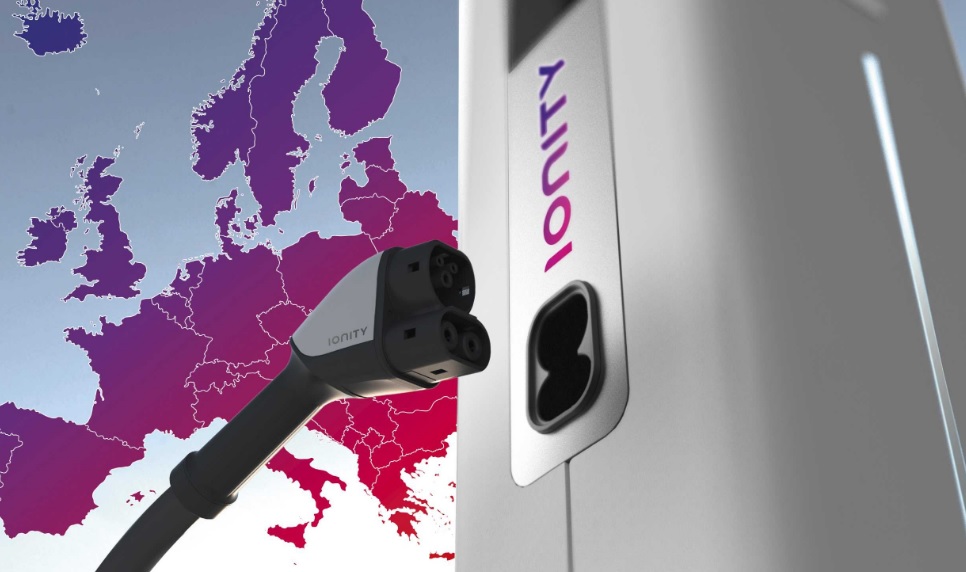 Porsche subsidiaries have formed a joint venture called IONITY to carry it out. The High-Power-Charging (HPC) network will install chargers that will have the capacity to go up to 350 kW and will use the brand-agnostic Combined Charging System as the standard. Automakers hope the wide distribution of the fast chargers will make electric vehicles more appealing for consumers. This year will see 20 of these HPC stations installed. The IONITY joint venture is based in Munich and led by CEO Michael Hajesch, who expects to see 50 employees in place by early 2018. “The first pan-European HPC network plays an essential role in establishing a market for electric vehicles. IONITY will deliver our common goal of providing customers with fast charging and digital payment capability, to facilitate long-distance travel,” Hajesch said.
Porsche subsidiaries have formed a joint venture called IONITY to carry it out. The High-Power-Charging (HPC) network will install chargers that will have the capacity to go up to 350 kW and will use the brand-agnostic Combined Charging System as the standard. Automakers hope the wide distribution of the fast chargers will make electric vehicles more appealing for consumers. This year will see 20 of these HPC stations installed. The IONITY joint venture is based in Munich and led by CEO Michael Hajesch, who expects to see 50 employees in place by early 2018. “The first pan-European HPC network plays an essential role in establishing a market for electric vehicles. IONITY will deliver our common goal of providing customers with fast charging and digital payment capability, to facilitate long-distance travel,” Hajesch said.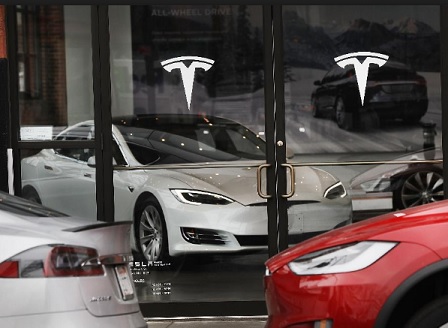 and a $21 million profit in Q3 2016. That’s coming from the huge investment needed for ramping up production of the Model 3 at its Fremont, Calif., assembly plant and its Nevada-based Gigafactory. The company also reported a record $3 billion in quarterly revenue and delivery of about 26,000 vehicles. Speeding up Model 3 production has hit a bottleneck, much of it at the battery factory in Nevada. The goal of building 5,000 of the more affordable electric cars at 5,000 units per week has been moved from the end of 2017 to early 2018. “While we continue to make significant progress each week in fixing Model 3 bottlenecks, the nature of manufacturing challenges during a ramp such as this makes it difficult to predict exactly how long it will take for all bottlenecks to be cleared or when new ones will appear,” Tesla said.
and a $21 million profit in Q3 2016. That’s coming from the huge investment needed for ramping up production of the Model 3 at its Fremont, Calif., assembly plant and its Nevada-based Gigafactory. The company also reported a record $3 billion in quarterly revenue and delivery of about 26,000 vehicles. Speeding up Model 3 production has hit a bottleneck, much of it at the battery factory in Nevada. The goal of building 5,000 of the more affordable electric cars at 5,000 units per week has been moved from the end of 2017 to early 2018. “While we continue to make significant progress each week in fixing Model 3 bottlenecks, the nature of manufacturing challenges during a ramp such as this makes it difficult to predict exactly how long it will take for all bottlenecks to be cleared or when new ones will appear,” Tesla said.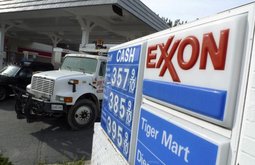 government and the Louisiana Department of Environmental Quality. The company will install and operate air pollution and monitoring technology for pollution reductions coming from eight of its petrochemical manufacturing facilities in Texas and Louisiana. The Dept. of Justice and Environmental Protection Agency had been enforcing violations of the Clean Air Act, coming from the oil company failing to accurately monitor industrial flares at the facilities, causing excess emissions. Some environmentalists say the settlement is not nearly enough to address violations by the oil company going back a decade. EPA administrator Scott Pruitt said its shows the EPA’s commitment to enforcing the law and working with states to address compliance with environmental regulations. It may not address other claims, such as those filed in June by New York’s attorney general accusing former ExxonMobil chief and current Secretary of State Rex Tillerson of misleading investors on the costs of climate change while Tillerson led the oil giant.
government and the Louisiana Department of Environmental Quality. The company will install and operate air pollution and monitoring technology for pollution reductions coming from eight of its petrochemical manufacturing facilities in Texas and Louisiana. The Dept. of Justice and Environmental Protection Agency had been enforcing violations of the Clean Air Act, coming from the oil company failing to accurately monitor industrial flares at the facilities, causing excess emissions. Some environmentalists say the settlement is not nearly enough to address violations by the oil company going back a decade. EPA administrator Scott Pruitt said its shows the EPA’s commitment to enforcing the law and working with states to address compliance with environmental regulations. It may not address other claims, such as those filed in June by New York’s attorney general accusing former ExxonMobil chief and current Secretary of State Rex Tillerson of misleading investors on the costs of climate change while Tillerson led the oil giant.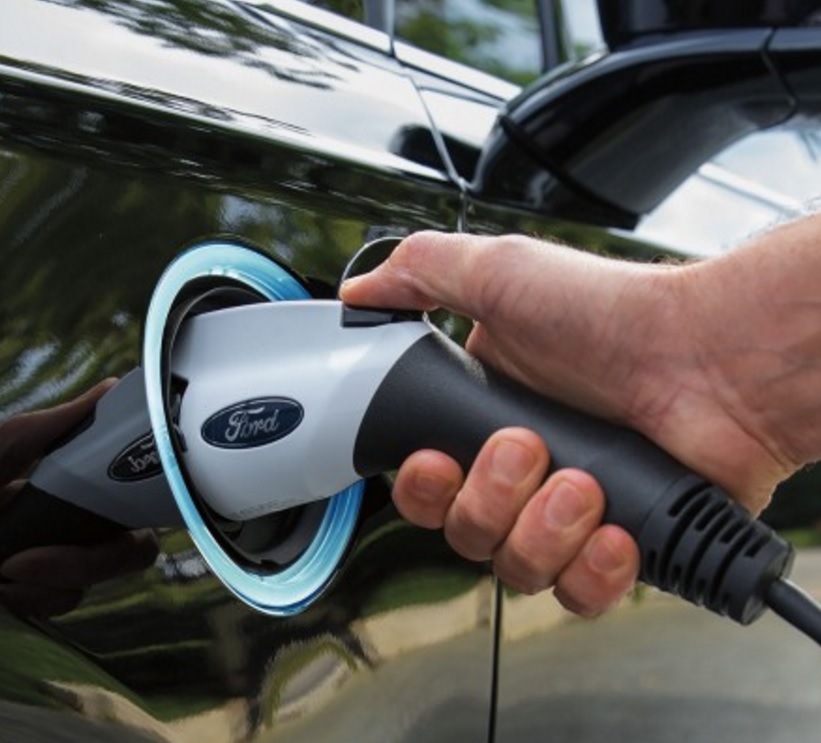 according to a new report from the Electric Vehicle Charging Association – from 5,070 in 2011 to 50,991 this year. As a business sector, the EV charging infrastructure increased 576% in revenue between 2011 and 2016 – from $27 million in 2011 to $182 million in 2016. Revenue could grow to the $276 million by 2020, and the association also forecasts that the industry globally could produce $45.59 million by 2025. As with electric vehicle sales, California has led the way in charging stations. The state’s infrastructure has grown 67% since the association’s first report in October 2015. California now about 15,930 charging outlets in place, not including residential outlets, according to the “State of the Charge” report.
according to a new report from the Electric Vehicle Charging Association – from 5,070 in 2011 to 50,991 this year. As a business sector, the EV charging infrastructure increased 576% in revenue between 2011 and 2016 – from $27 million in 2011 to $182 million in 2016. Revenue could grow to the $276 million by 2020, and the association also forecasts that the industry globally could produce $45.59 million by 2025. As with electric vehicle sales, California has led the way in charging stations. The state’s infrastructure has grown 67% since the association’s first report in October 2015. California now about 15,930 charging outlets in place, not including residential outlets, according to the “State of the Charge” report.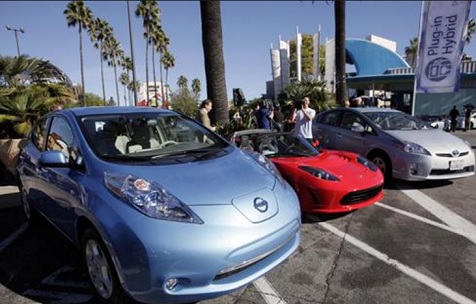 that even when the power is generated by coal power, it still emits fewer emissions that diesel cars. Those findings are especially relevant to the European market, where automakers are gradually reducing the volume of diesel passenger cars. Conducted by VUB university in Brussels for NGO Transport & Environment (T&E) the study analyzed data from several European markets. Dr. Maarten Messagie wrote in the study that there is room for improvement on the battery manufacturing side to reduce the environmental impact, but clean energy sources have the greater impact. As in the U.S. and other countries, those emissions improvements are expected to increase as utilities add more renewable energy generation.
that even when the power is generated by coal power, it still emits fewer emissions that diesel cars. Those findings are especially relevant to the European market, where automakers are gradually reducing the volume of diesel passenger cars. Conducted by VUB university in Brussels for NGO Transport & Environment (T&E) the study analyzed data from several European markets. Dr. Maarten Messagie wrote in the study that there is room for improvement on the battery manufacturing side to reduce the environmental impact, but clean energy sources have the greater impact. As in the U.S. and other countries, those emissions improvements are expected to increase as utilities add more renewable energy generation.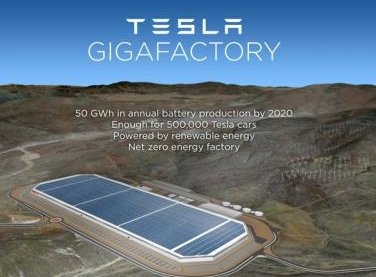 speed in the near future. Panasonic CEO Kazuhiro Tsuga said yesterday that delays to the automation of the battery pack production line meant some of it had to be completed manually. It will soon be automated, meaning the number of vehicles to be produced will rise sharply, he said. Tsugu declined to comment on how his company sees the production schedule will be carried out compared to the original projection. Automotive demand from Tesla and other auto industry customers helped the Japanese electronics company’s operating profit rise 6% during the July-September period. Panasonic supplies battery cells for Gigafactory production of Tesla’s battery packs. Earlier this month, Tesla had said that manufacturing bottlenecks had caused the slowdown for the Model 3 – down to 260 produced versus the original goal of 1,500 during the past quarter.
speed in the near future. Panasonic CEO Kazuhiro Tsuga said yesterday that delays to the automation of the battery pack production line meant some of it had to be completed manually. It will soon be automated, meaning the number of vehicles to be produced will rise sharply, he said. Tsugu declined to comment on how his company sees the production schedule will be carried out compared to the original projection. Automotive demand from Tesla and other auto industry customers helped the Japanese electronics company’s operating profit rise 6% during the July-September period. Panasonic supplies battery cells for Gigafactory production of Tesla’s battery packs. Earlier this month, Tesla had said that manufacturing bottlenecks had caused the slowdown for the Model 3 – down to 260 produced versus the original goal of 1,500 during the past quarter.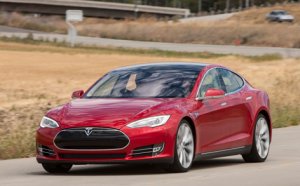 was up 32% year-over-year by the end of September. December 2015 had been its top selling month, with just over 33,800 units sold. Sales are expected to be strong in the fourth quarter, with historic data showing sales always improving over the last three months of the year in the region. Plug-in vehicles increased to 2.2% of overall new vehicle sales in Europe during September. Tesla saw its best month ever in Europe with the Model S coming in at #1 with an estimated 2,527 units sold. The next four on the list for top five selling PEVs in Europe during September were the Renault Zoe at 2,306 units sold, the Tesla Model X at 2,137, the Mitsubishi Outlander PHEV at 2,080, and the Volkswagen e-Golf at 2,041 units sold.
was up 32% year-over-year by the end of September. December 2015 had been its top selling month, with just over 33,800 units sold. Sales are expected to be strong in the fourth quarter, with historic data showing sales always improving over the last three months of the year in the region. Plug-in vehicles increased to 2.2% of overall new vehicle sales in Europe during September. Tesla saw its best month ever in Europe with the Model S coming in at #1 with an estimated 2,527 units sold. The next four on the list for top five selling PEVs in Europe during September were the Renault Zoe at 2,306 units sold, the Tesla Model X at 2,137, the Mitsubishi Outlander PHEV at 2,080, and the Volkswagen e-Golf at 2,041 units sold.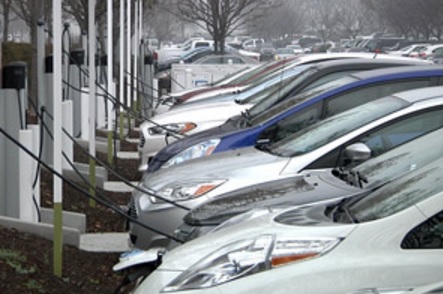 chargers in operation; 2,183 of them are fast chargers, including Tesla’s Superchargers. Available charging stations are in place at retail stores, shopping malls, movie theaters, and restaurants; and more are showing up at workplace parking lots and city government sites such as libraries. Recent first-time EV buyers are finding what EV owners have experienced in recent years. They charge their EVs at home overnight, and top off for shorter periods while at home our out running errands. Most of the U.S. charging infrastructure is located on the coasts, and fast charging stations differ based on the electric car being driven. EVgo is one of the infrastructure suppliers working at bringing more fast chargers to public charging sites. Most of them have 50-to-60 kW charging capacity for now, and up to 150 kW; with testing being done on chargers that can go up to 350 kW. That ultra-fast charger will be able to give long-range EV about 250 miles of range in about 15 minutes of charging. Most of the changes currently being made at charging stations come from upgrades at these stations, but moving up to high-capacity fast chargers will take more space, construction, and investments in the future. “For the new stations that we’re designing where possible, we’re reserving the power capacity required to serve those higher levels and laying out the stations so that all it will take is a booster in the back of the stations so that you can get up to the higher level,” said Terry O’Day, vice president of product strategy and market development at EVgo.
chargers in operation; 2,183 of them are fast chargers, including Tesla’s Superchargers. Available charging stations are in place at retail stores, shopping malls, movie theaters, and restaurants; and more are showing up at workplace parking lots and city government sites such as libraries. Recent first-time EV buyers are finding what EV owners have experienced in recent years. They charge their EVs at home overnight, and top off for shorter periods while at home our out running errands. Most of the U.S. charging infrastructure is located on the coasts, and fast charging stations differ based on the electric car being driven. EVgo is one of the infrastructure suppliers working at bringing more fast chargers to public charging sites. Most of them have 50-to-60 kW charging capacity for now, and up to 150 kW; with testing being done on chargers that can go up to 350 kW. That ultra-fast charger will be able to give long-range EV about 250 miles of range in about 15 minutes of charging. Most of the changes currently being made at charging stations come from upgrades at these stations, but moving up to high-capacity fast chargers will take more space, construction, and investments in the future. “For the new stations that we’re designing where possible, we’re reserving the power capacity required to serve those higher levels and laying out the stations so that all it will take is a booster in the back of the stations so that you can get up to the higher level,” said Terry O’Day, vice president of product strategy and market development at EVgo.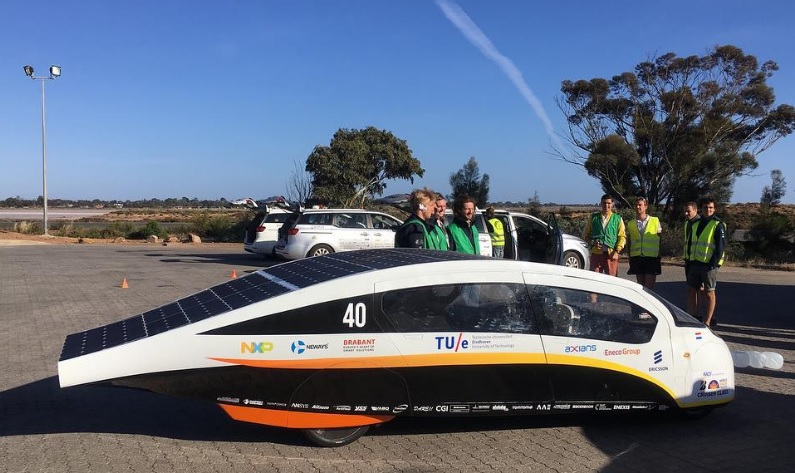 the lead. The race covered 3,022 kilometers (1,880-mile) race from Darwin to Adelaide. Stella was able to gain double the efficiency points of the second-place team. The solar-powered electric car uses a unique Solar Navigator platform from Ericsson’s Connected Urban Transport. Stella was started and created years ago by Solar Team Eindhoven from the Eindhoven (Netherlands) University of Technology, and has been widely recognized and is gaining support. In 2015, Stella won the TechCrunch award for biggest technology achievements during the 8th annual “Crunchies Awards” against an impressive list of contenders.
the lead. The race covered 3,022 kilometers (1,880-mile) race from Darwin to Adelaide. Stella was able to gain double the efficiency points of the second-place team. The solar-powered electric car uses a unique Solar Navigator platform from Ericsson’s Connected Urban Transport. Stella was started and created years ago by Solar Team Eindhoven from the Eindhoven (Netherlands) University of Technology, and has been widely recognized and is gaining support. In 2015, Stella won the TechCrunch award for biggest technology achievements during the 8th annual “Crunchies Awards” against an impressive list of contenders.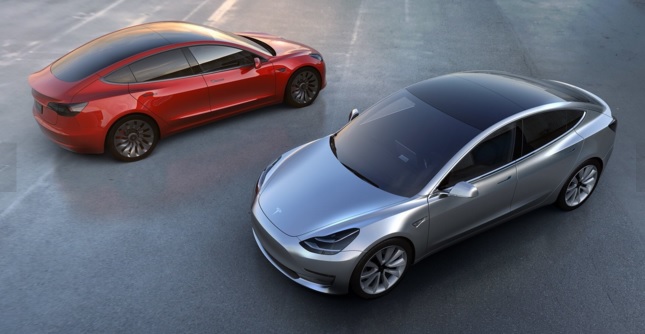 manufactured this year to about 500,000 next year – mostly through the Model 3 –
manufactured this year to about 500,000 next year – mostly through the Model 3 –  electric buses, but also for moving goods. Andy Swanton, vice president of truck sales at BYD,
electric buses, but also for moving goods. Andy Swanton, vice president of truck sales at BYD,  administration’s federal fuel economy and emissions standards. U.S. Sen. Sheldon Whitehouse (D-R.I.) was scheduled to participate in a conference call Wednesday with executives from Sierra Club, Environment America, Public Citizen, Greenpeace, and Safe Climate Campaign. The speaker panel took place on the eve of Ford Motor Co.’s third quarter financial statement, with Ford, Volkswagen, and other automakers called on to avoid gutting the clean cars standards by “colluding with President Donald Trump to roll them back.”
administration’s federal fuel economy and emissions standards. U.S. Sen. Sheldon Whitehouse (D-R.I.) was scheduled to participate in a conference call Wednesday with executives from Sierra Club, Environment America, Public Citizen, Greenpeace, and Safe Climate Campaign. The speaker panel took place on the eve of Ford Motor Co.’s third quarter financial statement, with Ford, Volkswagen, and other automakers called on to avoid gutting the clean cars standards by “colluding with President Donald Trump to roll them back.” 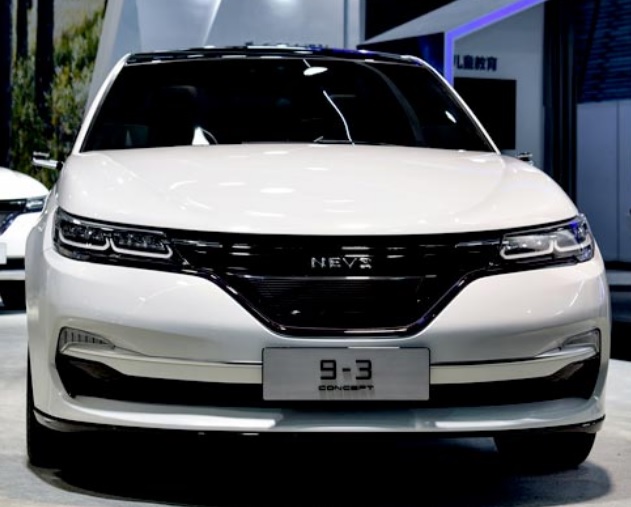 Wednesday, in presence of among others the Swedish Prime Minister Stefan Löfven. NEVS (National Electric Vehicle Sweden) is producing electric cars adapted from Saab assets. The company is backed by Chinese investors. The new automaker debuted an electric 9-3 at the 2017 CES Asia trade show. DiDi is China’s largest shared mobility service, and cut Uber out of the market last year through a major investment and no-compete deal. NEVA and DiDi plan to develop an electric vehicle fully optimized to DiDi’s mobility service. That includes going the route of self-driving and on-demand mobility services of the future. It will probably tap into the InMotion concept that NEVS unveiled in June. The first vehicle used in the new cooperative venture will be the NEVS 9-3.
Wednesday, in presence of among others the Swedish Prime Minister Stefan Löfven. NEVS (National Electric Vehicle Sweden) is producing electric cars adapted from Saab assets. The company is backed by Chinese investors. The new automaker debuted an electric 9-3 at the 2017 CES Asia trade show. DiDi is China’s largest shared mobility service, and cut Uber out of the market last year through a major investment and no-compete deal. NEVA and DiDi plan to develop an electric vehicle fully optimized to DiDi’s mobility service. That includes going the route of self-driving and on-demand mobility services of the future. It will probably tap into the InMotion concept that NEVS unveiled in June. The first vehicle used in the new cooperative venture will be the NEVS 9-3. London, Paris, Los Angeles, Copenhagen, Barcelona, Quito, Vancouver, Mexico City, Milan, Seattle, Auckland, and Cape Town have signed the declaration that commits to procuring only zero-emission buses from 2025, and to make sure a major area of their city is zero emission by 2030. Commitments include increasing usage of walking, cycling, public transportation, and shared transport; reducing the number of polluting vehicles on their streets; converting over to ZEVs for their city fleets; and collaborating with suppliers, fleet operators, and businesses to shift over to ZEVs and reduce vehicle miles in these cities. Paris mayor Anne Hidalgo, who led the ban for elimination of fossil fuel-powered vehicles in the city, is serving as C40 chair. “Working with citizens, businesses and mayors of these great cities we will create green and healthy streets for future generations to enjoy,” Hidalgo said.
London, Paris, Los Angeles, Copenhagen, Barcelona, Quito, Vancouver, Mexico City, Milan, Seattle, Auckland, and Cape Town have signed the declaration that commits to procuring only zero-emission buses from 2025, and to make sure a major area of their city is zero emission by 2030. Commitments include increasing usage of walking, cycling, public transportation, and shared transport; reducing the number of polluting vehicles on their streets; converting over to ZEVs for their city fleets; and collaborating with suppliers, fleet operators, and businesses to shift over to ZEVs and reduce vehicle miles in these cities. Paris mayor Anne Hidalgo, who led the ban for elimination of fossil fuel-powered vehicles in the city, is serving as C40 chair. “Working with citizens, businesses and mayors of these great cities we will create green and healthy streets for future generations to enjoy,” Hidalgo said. Seven years after the credit system was initiated for producers of low-carbon fuels, cities and companies are using renewable diesel coming from fats and oils for all types of vehicles, including fire trucks to UPS delivery trucks. Bloomberg reported that the value of the LCFS credits for renewable diesel exceed those from electric vehicles fourfold and are second only to ethanol. The market “is definitely growing,” said Dayne Delahoussaye, head of Neste’s North American public affairs, the largest supplier of renewable diesel in California. “Renewable diesel has become very popular with the refining community as a good tool to meet obligations.”
Seven years after the credit system was initiated for producers of low-carbon fuels, cities and companies are using renewable diesel coming from fats and oils for all types of vehicles, including fire trucks to UPS delivery trucks. Bloomberg reported that the value of the LCFS credits for renewable diesel exceed those from electric vehicles fourfold and are second only to ethanol. The market “is definitely growing,” said Dayne Delahoussaye, head of Neste’s North American public affairs, the largest supplier of renewable diesel in California. “Renewable diesel has become very popular with the refining community as a good tool to meet obligations.”